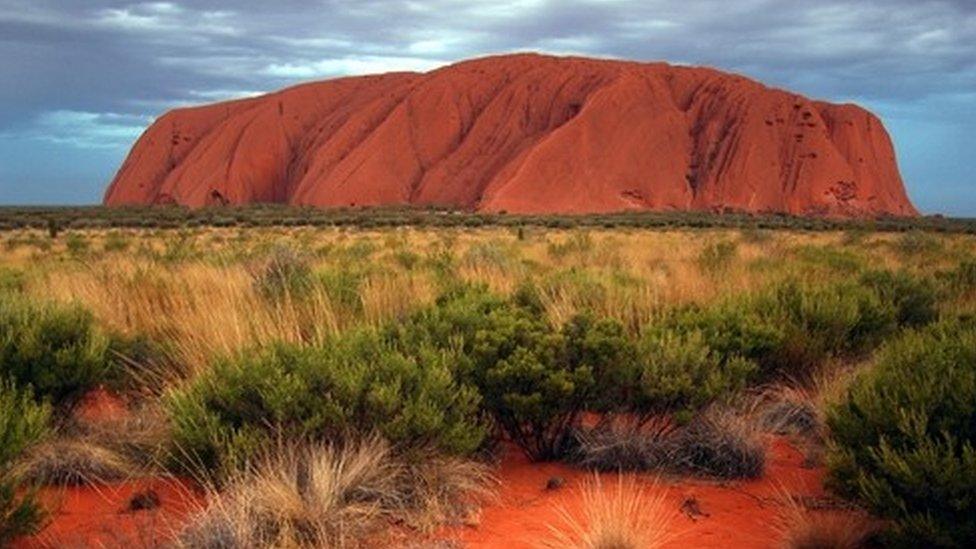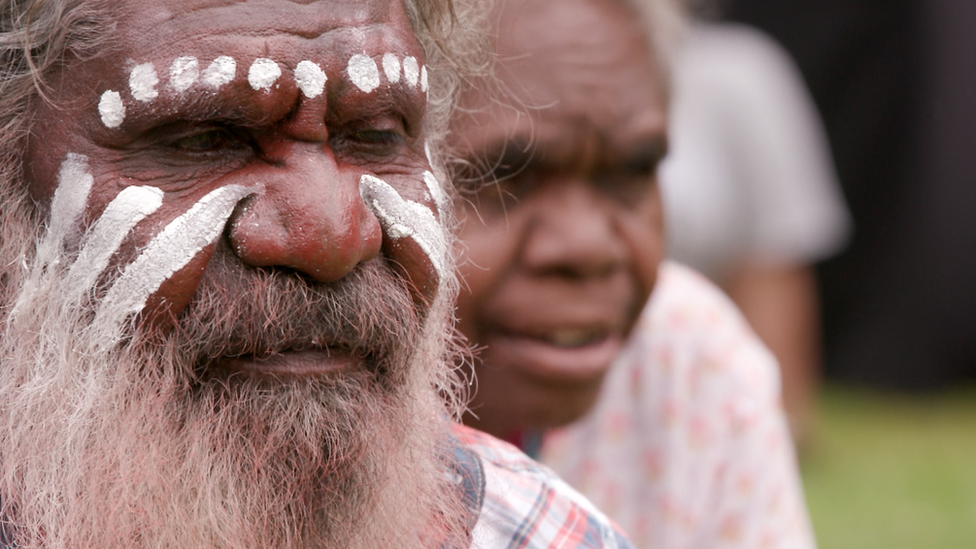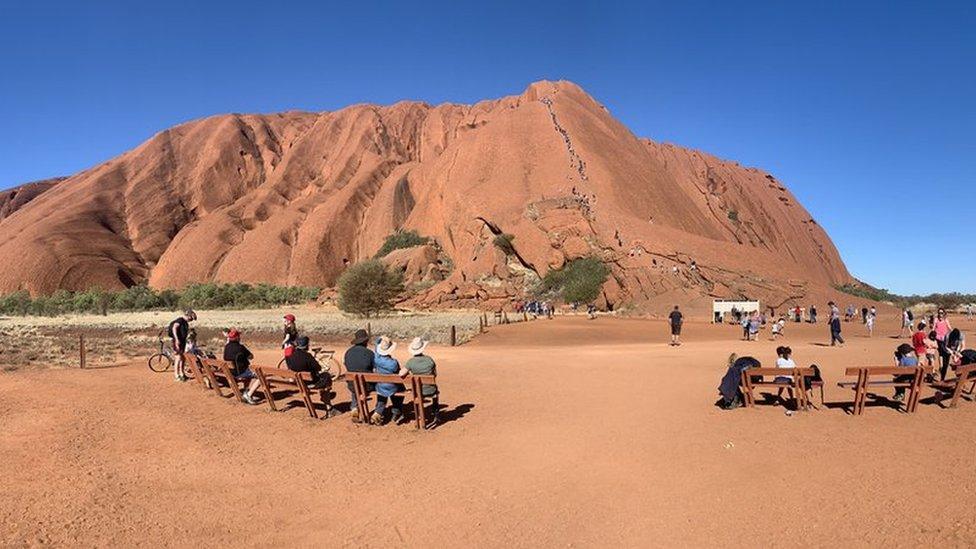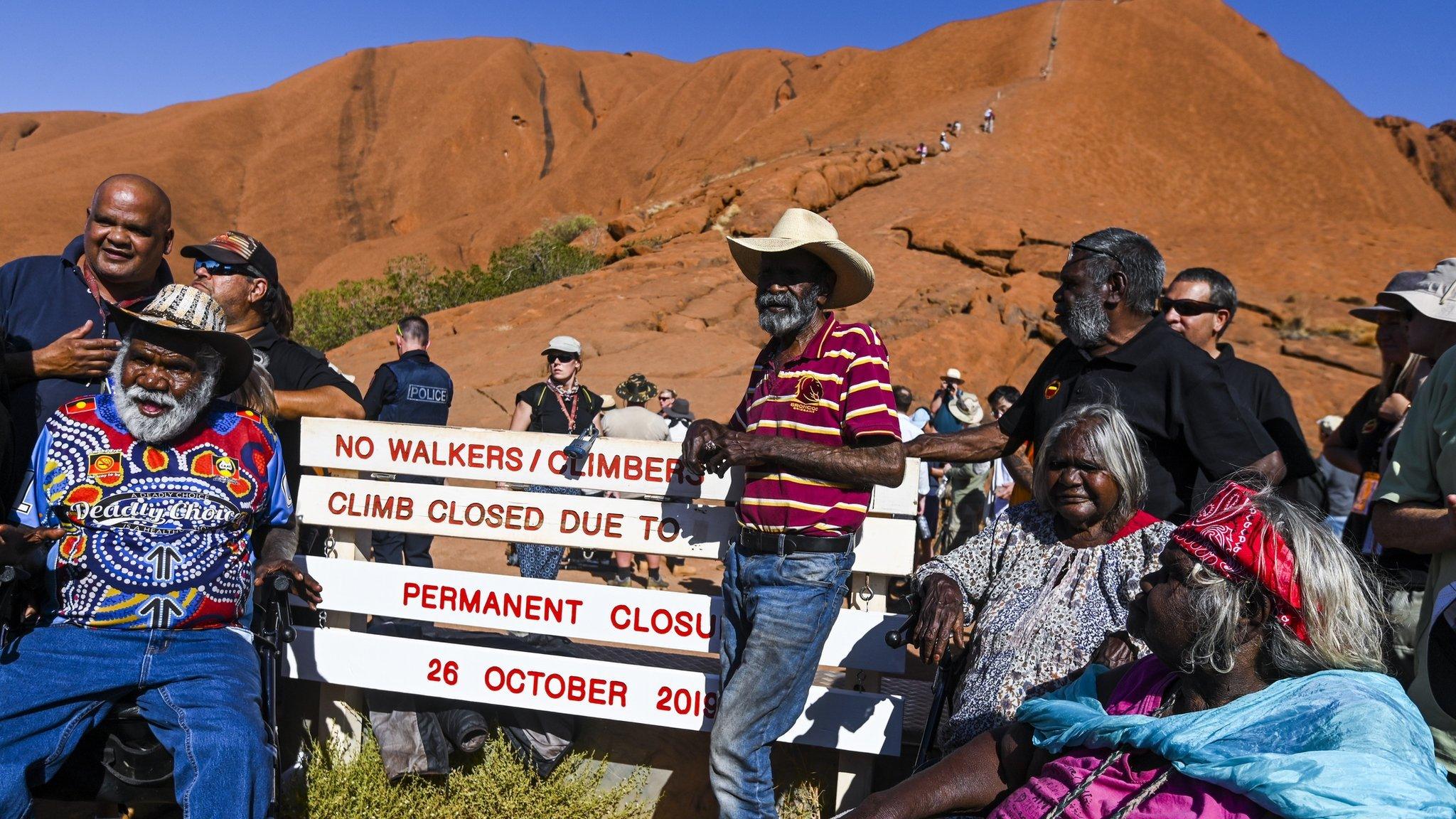Google removes Uluru virtual walk from Street View
- Published

Google has removed images on Street View that allowed people to virtually walk to the summit of Uluru, in Australia's Northern Territory.
Parks Australia had requested user-generated images from the sacred site be immediately removed.
And Google said it had removed them as soon as it had been alerted.
Uluru was closed to visitors a year ago at the request of the indigenous Anangu people, to whom the Australian government returned ownership in 1985.
Once better-known internationally as Ayers Rock, it is linked to many traditional stories of the Anangu.
Google's Street View function provides 360-degree images of different environments, alongside people's own pictures.
A Parks Australia official told ABC News, external it had "alerted Google Australia to the user-generated images from the Uluru summit that have been posted on their mapping platform".
And it had requested the content "be immediately removed in accordance with the wishes of Anangu, Uluru's traditional owners, and the national park's film and photography guidelines".
Uluru tourist: "It is probably disrespectful but we climbed"
In response, Google said: "We understand Uluru-Kata Tjuta National Park is deeply sacred to the Anangu people.
"As soon as Parks Australia raised their concerns about this user contribution, we removed the imagery."
The BBC understands that the content pre-dated the October 2019 ban on people climbing the monolith.
Sammy Wilson, who chaired the national park board which decided to close it to visitors, said at the time: "It is an extremely important place, not a playground or theme park like Disneyland."
But huge crowds gathered in the weeks before the ban, with some social-media users capturing lines of visitors queuing up to make the climb.
- Published28 June 2018

- Published11 July 2019

- Published25 October 2019
